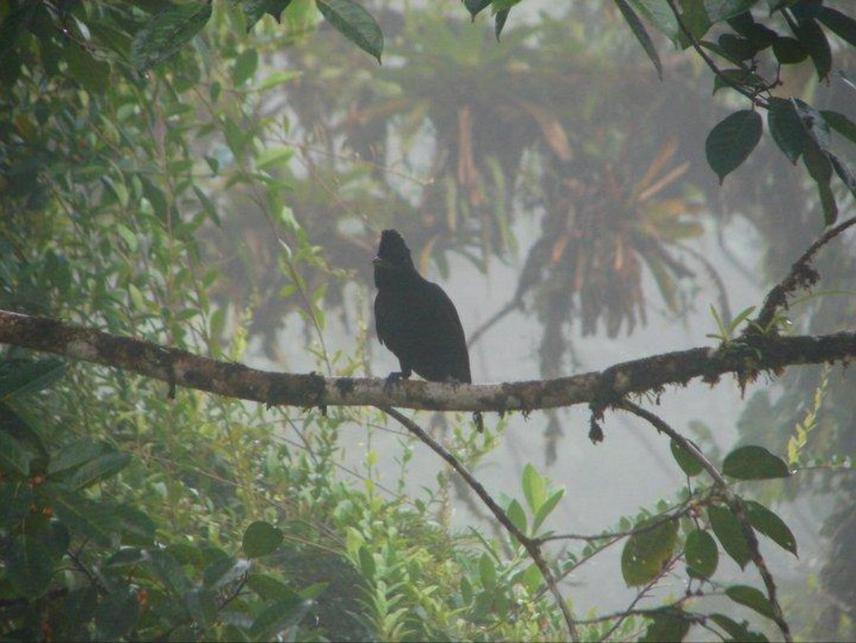Karolina Fierro-Calderón
The aim of the project is to determinate the population density for four endangered birds, establish these birds as Conservation Targets into the management plan of the park and to fix a monitoring programme at long term for them.

Long-wattled Umbrellabird (Cephalopterus penduliger).
This proposal came up as a consequence of our last project in the Western Andes of Colombia. During 2008, my team and I developed several educational activities and a scientific research on endangered birds in two IBAs in this cordillera supported by Conservation Leadership Programme. With this new project, we are looking for expanding the impact of our conservation actions in a larger scale at the region, including National Parks.
Los Farallones de Cali National Park is located in the Western Andes, has 150.000 ha between 400 and 3800 m of altitude and contains a variety of ecosystems including rainy, humid and very humid forests and Paramos. The park has currently a management plan and there are priority and urgent actions to take concerning on bird conservation. The determination of the population sizes of target species such as endangered birds is crucial for the Park managers in order to evaluate the current condition of some habitats in the Park.
We will determinate the population density of Baudo Guan (Penelope ortoni, VU), Yellow-green Bush-Tanager (Chlorospingus flavovirens, VU), Long-wattled Umbrellabird (Cephalopterus penduliger, VU) and Banded Ground-cuckoo (Neomorphus radiolosus, VU) using point counts. Moreover, we will establish these birds as Conservation Targets into the management plan of the park and fix a monitoring programme at long term for them. Finally, we will raise the awareness of the local community by visiting local schools and delivering didactic materials.
We think that we can make a substantial and long lasting contribution to the conservation of avifauna in this important Colombian Natural Park. Some of these endangered species have been studied in Ecuador; however, it still remains a lot to know about their biology and population dynamics in Colombia. Ultimately, the produced information may be a useful tool for IUCN in order to determine the current status of these populations.